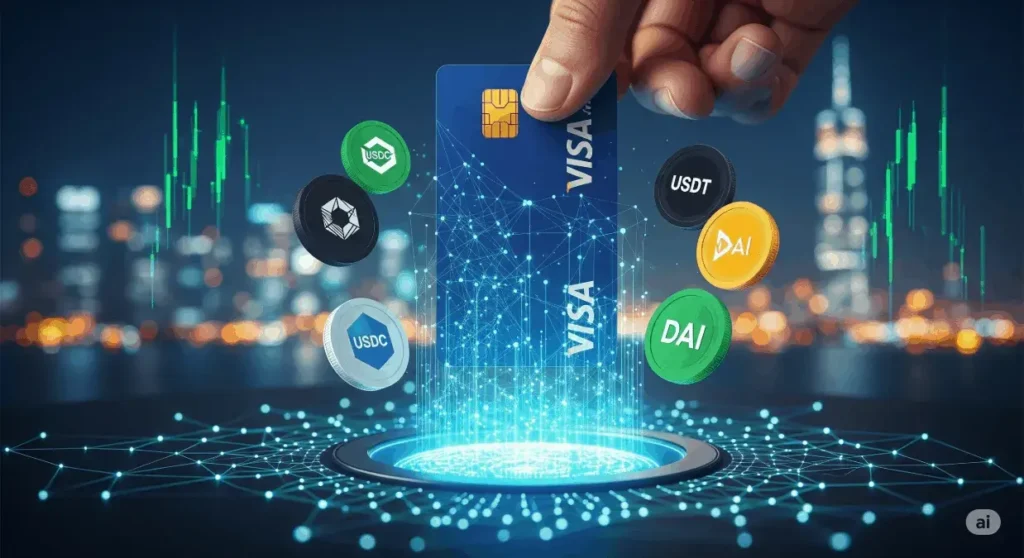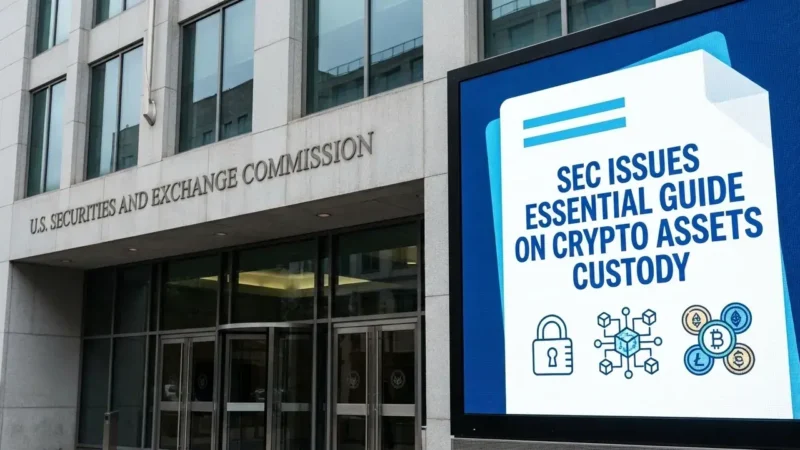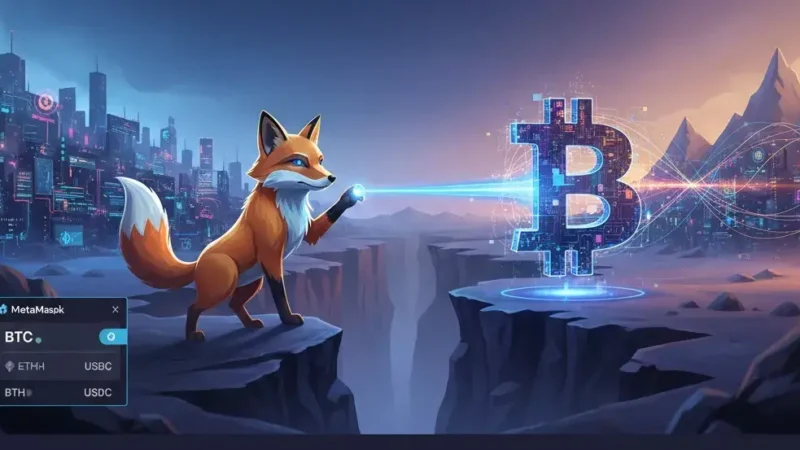Visa Expands Support for stablecoins and blockchains: Paving the Way for a Multichain Future

The global financial landscape is in the midst of a digital transformation, with stablecoins emerging as a pivotal force in reshaping how money moves around the world. At the forefront of this evolution is Visa, a global leader in digital payments, which is aggressively building a robust, multi-coin, and multi-chain foundation to meet the growing needs of its partners and the broader stablecoin ecosystem. This strategic move, which we will refer to as Visa Expands Support, marks a significant step toward creating an interoperable and scalable payment network for the future.
The announcement from Visa confirms its commitment to stablecoins, a journey that began with real-world pilots and live settlement activities years ago. The latest expansion sees Visa’s settlement platform adding support for two additional USD-backed stablecoins, two new blockchains, and the euro-backed EURC. This is more than a simple update; it’s a fundamental re-engineering of Visa’s infrastructure to embrace the decentralized future of finance. Rubail Birwadker, Global Head of Growth Products and Strategic Partnerships at Visa, encapsulates this vision, stating, “We believe that when stablecoins are trusted, scalable and interoperable, they can fundamentally transform how money moves around the world.”
A New Frontier for Digital Settlement: Stablecoins and Blockchains
The core of this new initiative is a massive expansion of Visa’s on-chain settlement capabilities. By enabling support for new digital assets and foundational blockchain networks, Visa is making its payment rails more flexible, resilient, and ready for a new generation of financial services.
New Stablecoins: Diversifying the Digital Dollar and Introducing the Euro
A key component of this expansion is a new partnership with Paxos, a regulated blockchain infrastructure provider. Through this collaboration, Visa Expands Support to include two additional dollar-backed stablecoins: Global Dollar (USDG) and PayPal USD (PYUSD). These tokens join Circle’s popular USD Coin (USDC), which Visa has been piloting for settlement since 2021. The inclusion of PYUSD is particularly notable, given PayPal’s vast user base, which could accelerate the mainstream adoption of stablecoins for everyday transactions.
In a landmark move, Visa has also integrated Circle’s euro-backed stablecoin, EURC. This is the first time Visa has added support for a non-USD stablecoin, providing select pilot partners with the option to settle in both USD- and EUR-backed digital currencies. This extends Visa’s crypto and treasury infrastructure, which already facilitates settlement in more than 25 fiat currencies worldwide. The ability to handle multi-currency settlement on-chain is a game-changer for international businesses, simplifying cross-border payments and reducing the friction associated with traditional financial systems.
More Chains: Building an Interoperable Foundation
Beyond new stablecoins, Visa has significantly broadened its blockchain compatibility. The company has added support for Stellar and Avalanche, which now operate alongside the previously supported Ethereum and Solana blockchains. This brings the total number of supported chains to four, creating a robust, multi-chain ecosystem. This multichain approach is crucial for achieving true interoperability and scalability. Each blockchain has its unique strengths and use cases. For example, Stellar’s native compatibility with the ISO 20022 messaging standard makes it a strategic choice for modern financial messaging and seamless integration with central bank payment systems. This compatibility allows for richer, structured data in cross-border settlements, which can minimize errors, delays, and compliance risks.
This move underscores Visa’s understanding that a single blockchain may not be the optimal solution for all use cases. By supporting multiple chains, Visa is positioning itself as a universal bridge, capable of connecting various stablecoin ecosystems and catering to the diverse needs of its partners, from traditional financial institutions to emerging fintechs.
The Strategic Rationale: Why Visa Expands Support Now
Visa’s expansion into the stablecoin space is not a speculative venture; it’s a calculated strategy driven by market demand and a clear vision for the future of payments. The company is responding to a growing interest from banks, merchants, developers, and fintechs who are looking for faster, more cost-effective, and more transparent ways to move money.
One of the most compelling use cases for stablecoins is cross-border transactions and remittances. Traditional international wire transfers can take days to settle and often come with high fees. Stablecoin settlements, by contrast, can be completed in hours, or even minutes, offering a level of speed and efficiency that is unprecedented in traditional finance. Visa’s CEO, Ryan McInerney, has previously highlighted the potential for stablecoins to address inefficiencies in local banking systems in emerging markets, accelerating the digitization of consumer and business payments in those regions.
The recent passage of the GENIUS Act in the US, which provides regulatory clarity for stablecoins, has also created a more favorable environment for companies like Visa to innovate. This regulatory framework reduces the punitive treatment banks face when engaging with blockchain or digital assets, paving the way for wider institutional adoption.
Enabling Stablecoin-Linked Cards and Broader Acceptance
Visa’s commitment to stablecoins extends beyond settlement. The company is actively expanding its stablecoin-linked card partnerships. These cards allow consumers and businesses to spend their stablecoin balances at any of the millions of merchants worldwide that accept Visa. To make this a reality at scale, Visa recognizes the need for a network that:
- Meets stablecoin wallets where they are: Enabling interoperability across multiple blockchains.
- Provides flexible settlement options: Directly accepting stablecoin settlements in connection with cards across various blockchains.
- Addresses growing market demand: Catering to the interest from a diverse range of partners, from banks to fintechs.
This is a critical part of the Visa Expands Support strategy. By partnering with companies like Bridge, a stablecoin orchestration platform owned by Stripe, Visa is enabling fintech developers to easily offer stablecoin-linked cards to their customers through a single API integration. This is a massive unlock, as it allows for the seamless conversion of stablecoin balances to local fiat currency at the point of sale, making stablecoins usable in everyday life.
Stay informed, read the latest crypto news in real time!
The Future of Payments is Interoperable
As new stablecoins and blockchains continue to emerge, Visa’s mission remains clear: to build the interoperable layer that makes stablecoin payments work at scale, just as its traditional payments have for decades. This includes ensuring security, reliability, and global reach. Visa Expands Support for these new digital assets and networks, not as a replacement for its existing infrastructure, but as an enhancement to it. The company’s vision is a future where the distinction between traditional and digital payments fades, and where the most efficient, secure, and reliable rails are used to move money, regardless of their underlying technology. This is Visa’s strategy for maintaining its leadership position in a rapidly changing world. The journey is just beginning, and with each step, Visa is bringing us closer to a truly global, interconnected, and digital financial system.




